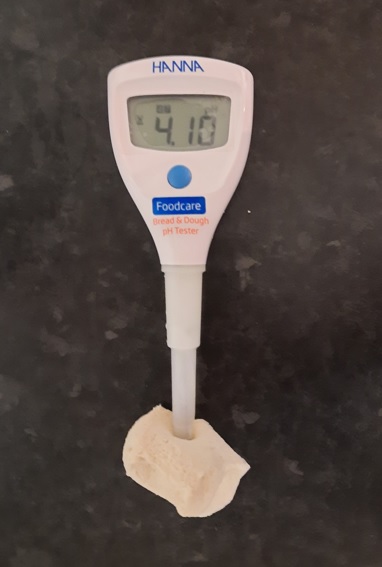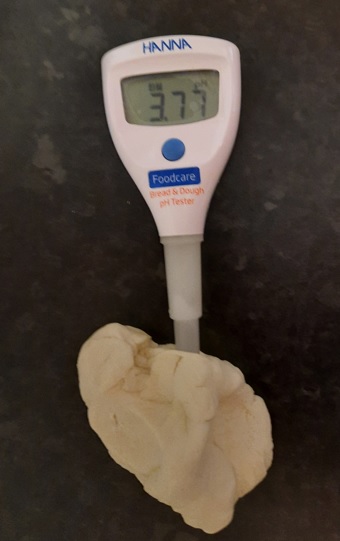
pH meter, a welcome reminder to calibrate

Admittedly, I am aware and I have spoken emphatically about the importance of calibrating pH meters. My training in the wine lab has instilled the habit of calibration each and every time prior to use, in that environment.
Why then have I been so lax with my bread and dough meter! Perhaps it is the domestic setting that gives rise to such a laid back approach. Then again, even in the work place I have been deemed as a 'laid back' kind of guy!
The other day I was drinking some deliciously well-crafted Pinot Grigio made in the mountainous terrain of Veneto, Italy. Since my dough pH meter is always to hand, curiously I decided to measure the pH of my wine.
It very quickly settled on pH 3.70.
Being very familiar with the pH ranges of a vast array of foods and beverages, and in particular different types of wine, I was immediately aware that this reading was not at all close to what it should be!
I therefore calibrated my meter and measured the Pinot Grigio again. Hey presto; it came up as pH 3.26. That's much more like it for this type of wine!
Long story short, all the while I thought my Lievito Madre starter was not reaching the target pH, while in fact with the new calibration it measures as expected, circa 4.1 for the end of a refresh and between 3.8-3.9 after the overnight phase.
No point measuring pH if the readings are not accurate!
Calibrate! Calibrate! Calibrate!


LM rinfresco and LM after overnight phase.


Comments
My own experience in the lab prompts me to add that proper cleaning and storage of the electrode is also important. I'm not familiar with the Hanna Bread Dough Tester pH meter; it may be much more robust than typical lab electrodes.
I often witnessed electrodes being stored in DI water instead of buffer or storage solution, a surefire way to shorten the life of the electrode. My lab colleague and I also had an unfortunate incident with a dried out electrode. We were working on a production batch of a material and a critical step was a titration of the mixture to a specific pH. The storage solution on the electrode had dried or leaked out and, despite a 2-point calibration, our pH was incorrect because the electrode was damaged. This led to the material failing testing and, to make matters worse, the material was for an external customer. That was an uncomfortable phone call!
Moral of the story: Always clean the electrode after use and store it properly!
Great reminders from you both! I’m not using my Hanna pH meter as often as I once was, so I need to make an effort to remember to make sure the storage solution doesn’t dry out. I don’t calibrate it as often as I should.
Benny
What are you using the pH meter for? To test ripeness of your levain? Something else? I have one for salami making but I’ve never used it for bread.
Indeed, to test for ripeness of an Italian levain.
However, pH doesn't tell you everything. Measuring TTA would be very useful also.
Italian levain